SUMMARY
This is AI generated summarization, which may have errors. For context, always refer to the full article.
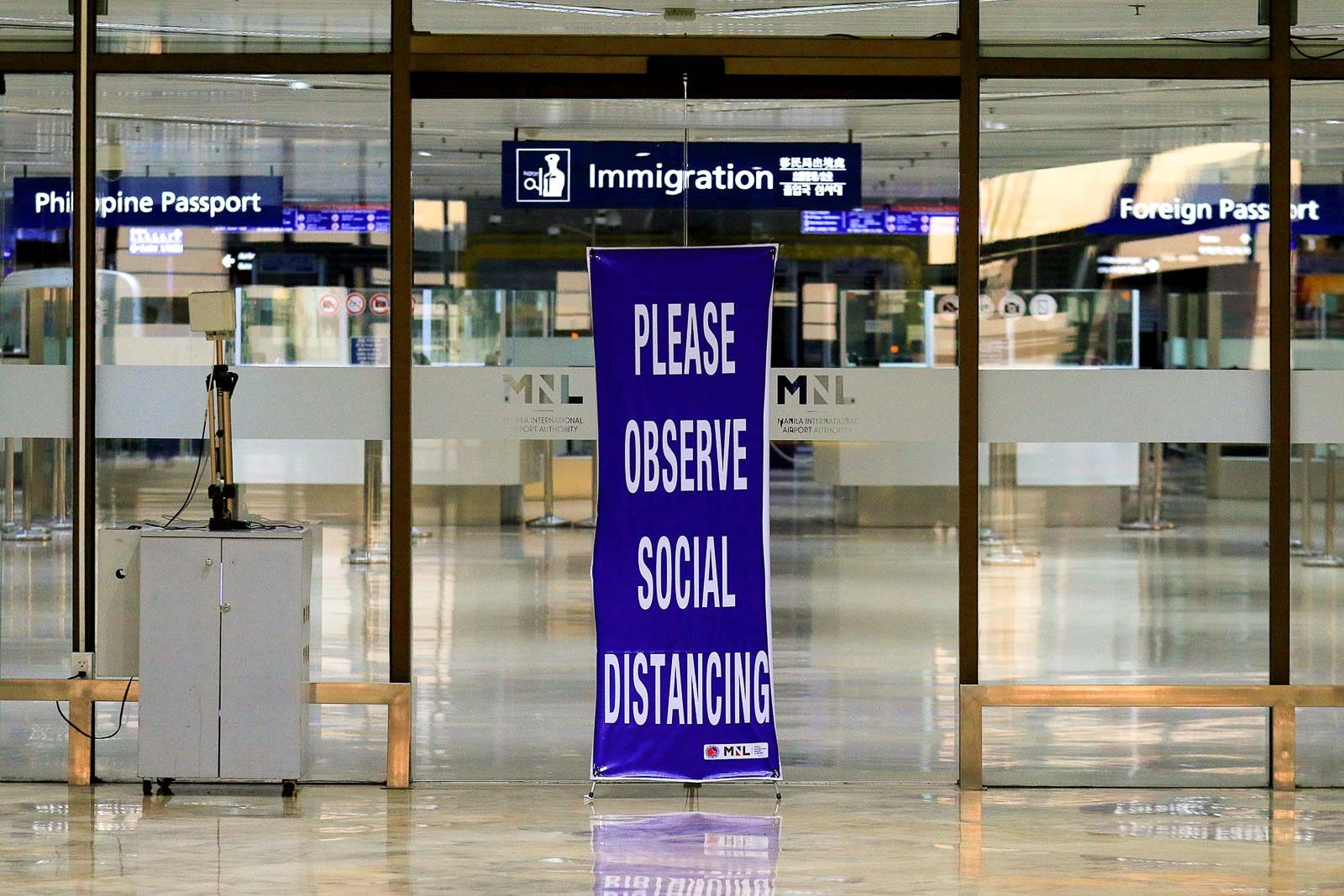
MANILA, Philippines – With the coronavirus continuing to spread in countries around the world, the Philippine government has set guidelines to test and quarantine all overseas Filipinos and foreigners arriving from abroad.
The mandatory restrictions, put in place to contain the spread of the coronavirus, will see returning Filipinos and foreigners entering the country both tested and placed under quarantine before they are allowed to move on to their final destination points.
The guidelines illustrate the challenge of traveling during the pandemic and are similar to those implemented in other countries to prevent importing cases of the disease.
If you’re among the travelers allowed to enter the Philippines, here’s what you should expect.
Who is covered?
Based on the government coronavirus task force’s Resolution No. 30 and the Department of Health’s Memorandum No. 2020-0200 or its guidelines on the management of arriving passengers, mandatory testing and quarantine will cover the following:
- Documented and undocumented overseas Filipino workers (OFWs)
- Non-OFWs such as returning students, scholars, exchange visitors, tourists, diplomats and their dependents
- Foreigners
The Department of Foreign Affairs earlier said that based on travel restrictions currently in place, only a limited number of foreigners are allowed to enter the country. They include foreign spouses and children of Filipinos as well as holders of visas earlier issued to accredited foreign governments and international organization officials. Dependents of foreign officials will also be allowed in the country.
I’ve now arrived in the Philippines. What happens next?
There are several steps that will be taken to evaluate and sort travelers after they arrive in the country. If you’ve arrived at an airport, this is what will happen:
- Personnel from the Bureau of Quarantine (BOQ) will do a thermal scan and collect each person’s health declaration card. (Among the documents you will need when traveling is a case investigation form, which some Philippine embassies have provided for downloading here.)
- Quarantine personnel will then divide travelers for either “stringent” or “mandatory” quarantine, based on the following:
- Stringent quarantine: If you’re showing symptoms of the disease or your country of origin or lay-over is one where there is a high level of community transmission based on the World Health Organization’s (WHO) latest situation report.
- Mandatory quarantine: If you’re not showing symptoms and your country of origin or lay-over has not been classified as an area with a high level of community transmission of the disease.
See the WHO’s latest classification of transmission for each country reported to have coronavirus cases here. These classifications are reviewed on a weekly basis and can be revised if new data from countries become available.
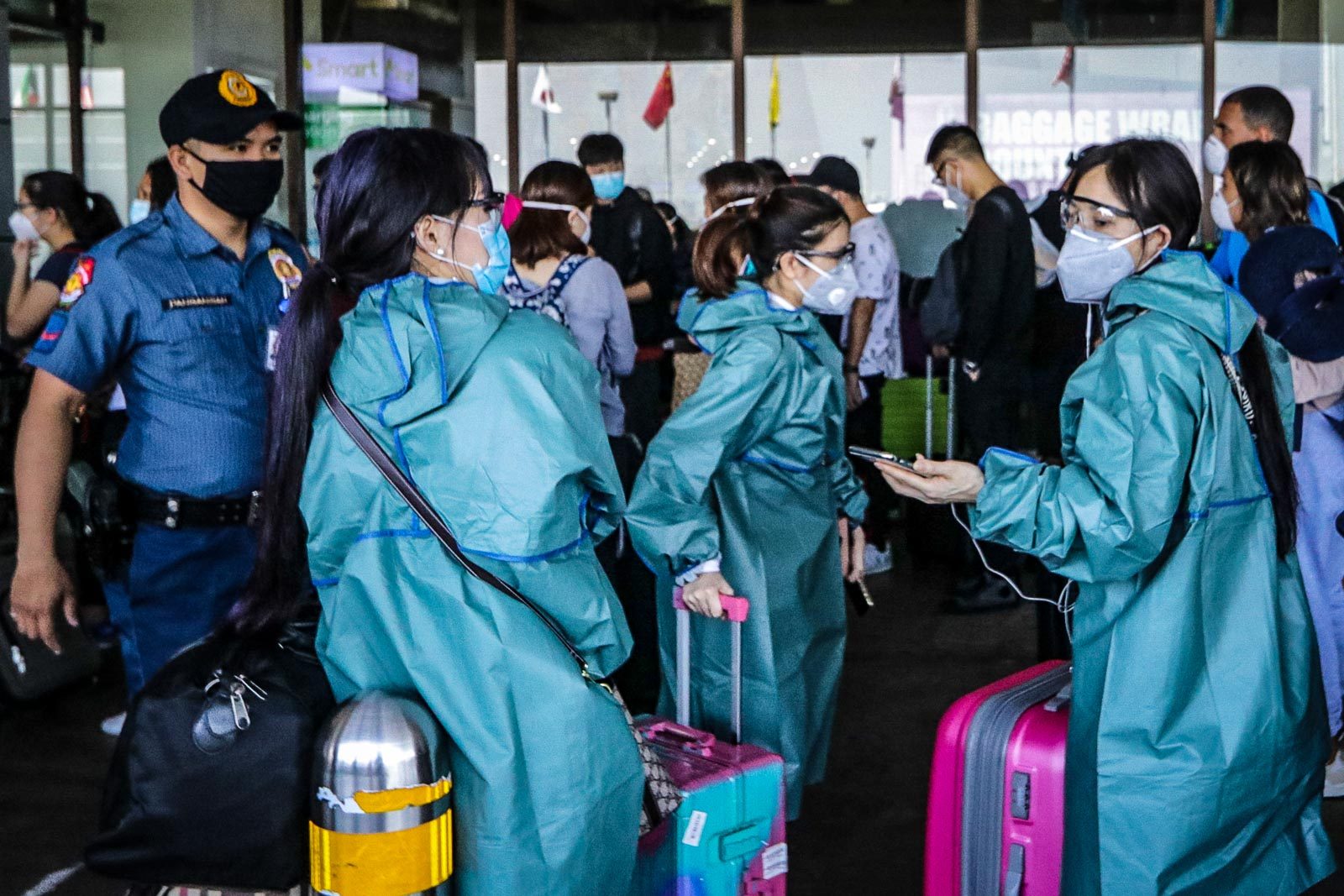
But before moving on, what makes stringent quarantine different from mandatory quarantine?
If you’re placed under stringent quarantine, health guidelines state you’ll be under the supervision of the Bureau of Quarantine in a facility that has been specifically designated for travelers coming from areas with high levels of community transmission. You’ll also be given a real-time polymerase chain reaction (RT-PCR) test as opposed to a rapid antibody test.
Under mandatory quarantine, you’ll be under the care of the Overseas Workers Welfare Administration (OWWA) or the Philippine Coast Guard (PCG) in a facility separate from those observing stringent quarantine.
After being sorted to undergo either stringent or mandatory quarantine, the next steps can be divided into 3 phases – getting tested, waiting for your test results, and after receiving test results.
GETTING TESTED
- A quarantine medical officer (QMO) will orient you on specific quarantine protocols.
- You’ll be made to go through a “one-stop shop” to fill out pertinent documents, after which government officials will coordinate with other agencies in the airport, such as the Bureau of Immigration, transportation, among others.
- After this, you’ll get your coronavirus test.
- If you’re going to undergo stringent quarantine, coast guard and quarantine personnel will collect swabs for a PCR test at either the airport where you arrived or the quarantine facility you’ll be housed in. This will be done in coordination with a testing laboratory.
- If undergoing mandatory quarantine, a designated medical team from the coast guard will conduct a rapid test at your port of entry as a baseline test. This will be done in coordination with the BOQ. If there are enough supplies or if the National Task Force COVID-19 permits, PCR testing may be done.
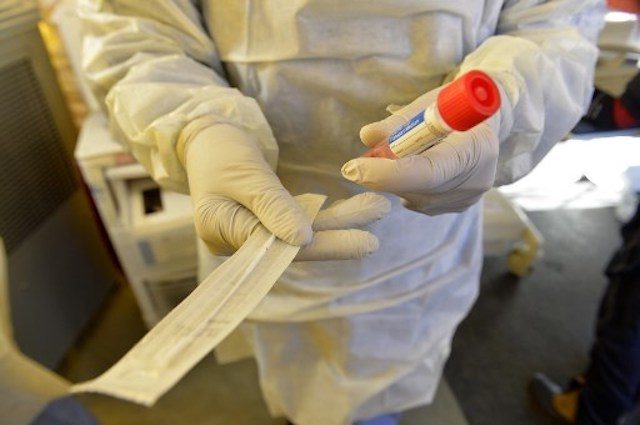
Health guidelines also allow foreigners who are holders of 9e visas – or visas issued to foreign government officials – and are classified for mandatory quarantine to undergo PCR testing. Their dependents will also be allowed to do the same.
In this case, testing should be done at a DOH-licensed testing facility at their own expense.
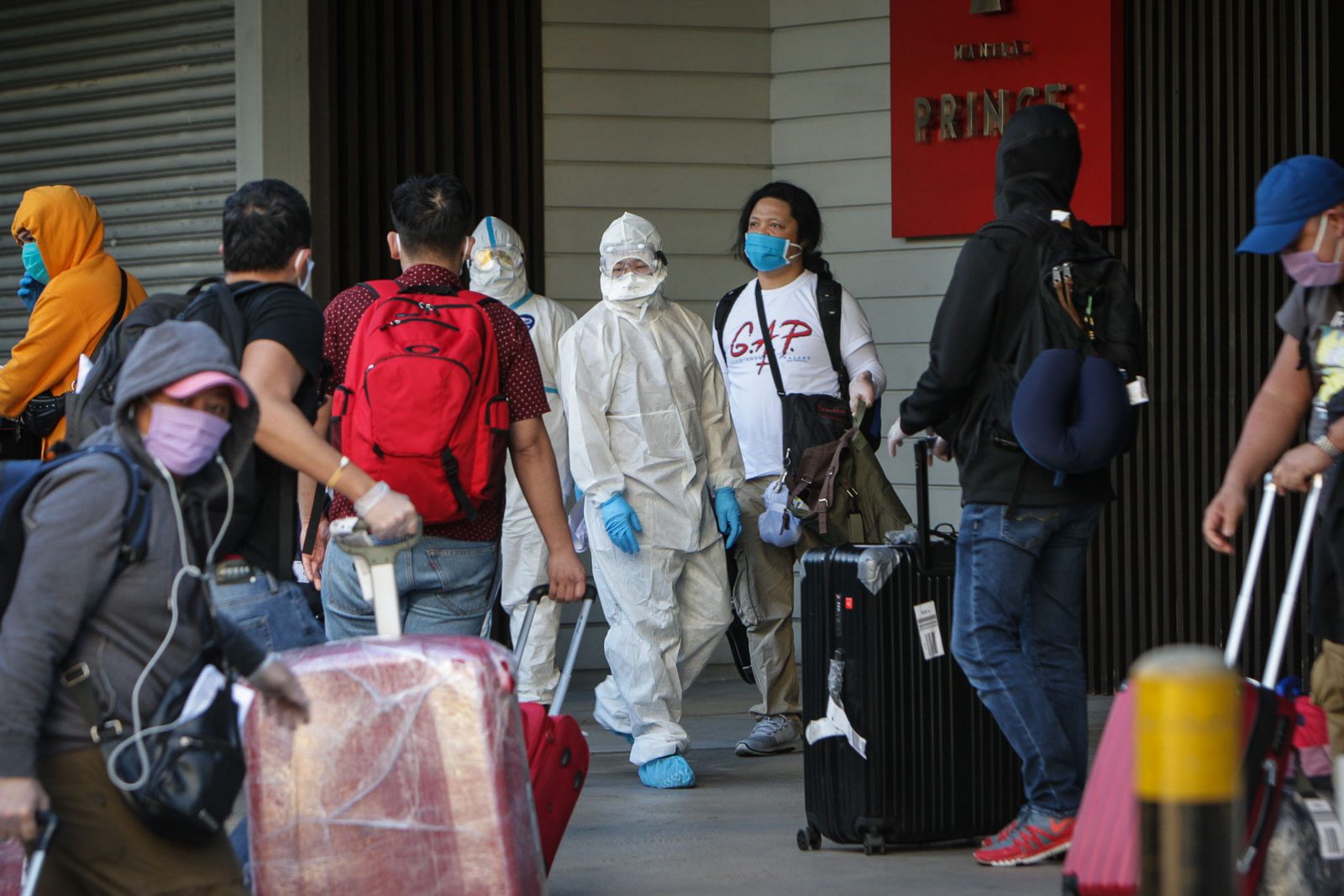
WAITING FOR YOUR TEST RESULTS
- After getting tested, you’ll be taken to your accommodations in a designated stringent or mandatory quarantine facility.
- If you’re an OFW, your manning agency and OWWA will pay for your accomodations
- Non-OFWs and foreigners will shoulder the cost of their accommodations in their chosen government-approved quarantine facility. Costs will depend on which facility you choose. The BOQ or OWWA will also need to endorse you to the officer-in-charge of your chosen quarantine facility.
You can find a list of quarantine facilities set up by both the national government and other local government units below:
- LIST: National coronavirus quarantine centers
- LIST: Quarantine centers in Metro Manila, provinces, cities
The following hotels have also been approved as quarantine centers:
In any facility for stringent or mandatory quarantine, you’ll need to follow health protocols in place.
- Once you’re settled in your place of quarantine, your health condition will be monitored.
- You’ll stay in quarantine until your test results are received.
If you’re headed to a mandatory quarantine facility and were tested with a rapid antibody test, you’ll stay in isolation for 14 days, after which you can expect to be tested again. If you start to develop coronavirus symptoms at any point during quarantine, you’ll have a nasal swab taken for a PCR test.
RECEIVING TEST RESULTS
Depending on which type of test you took – PCR test for stringent quarantine or rapid antibody test for mandatory quarantine – the following steps will be taken:
Positive PCR test
- You’ll be transferred to a referral hospital or temporary treatment and monitoring facility where you’ll receive clinical care as a coronavirus patient. The DOH’s Health Emergency Management will decide whether you’ll be referred to a hospital or treatment center based on further health protocols.
- Once cleared for discharge, you’ll be issued a medical certificate.
- After this, you’ll be brought to the local government unit of your residence or destination point.
- Health protocols will still advice you to observe another 14 days of isolation at home.
Negative PCR test
- You’ll be allowed to leave your quarantine accommodations and once cleared for discharge, you’ll be issued a medical certificate.
- After this, you’ll be brought to the local government unit of your residence or destination point.
- Health protocols will still advice you to observe another 14 days of isolation at home.
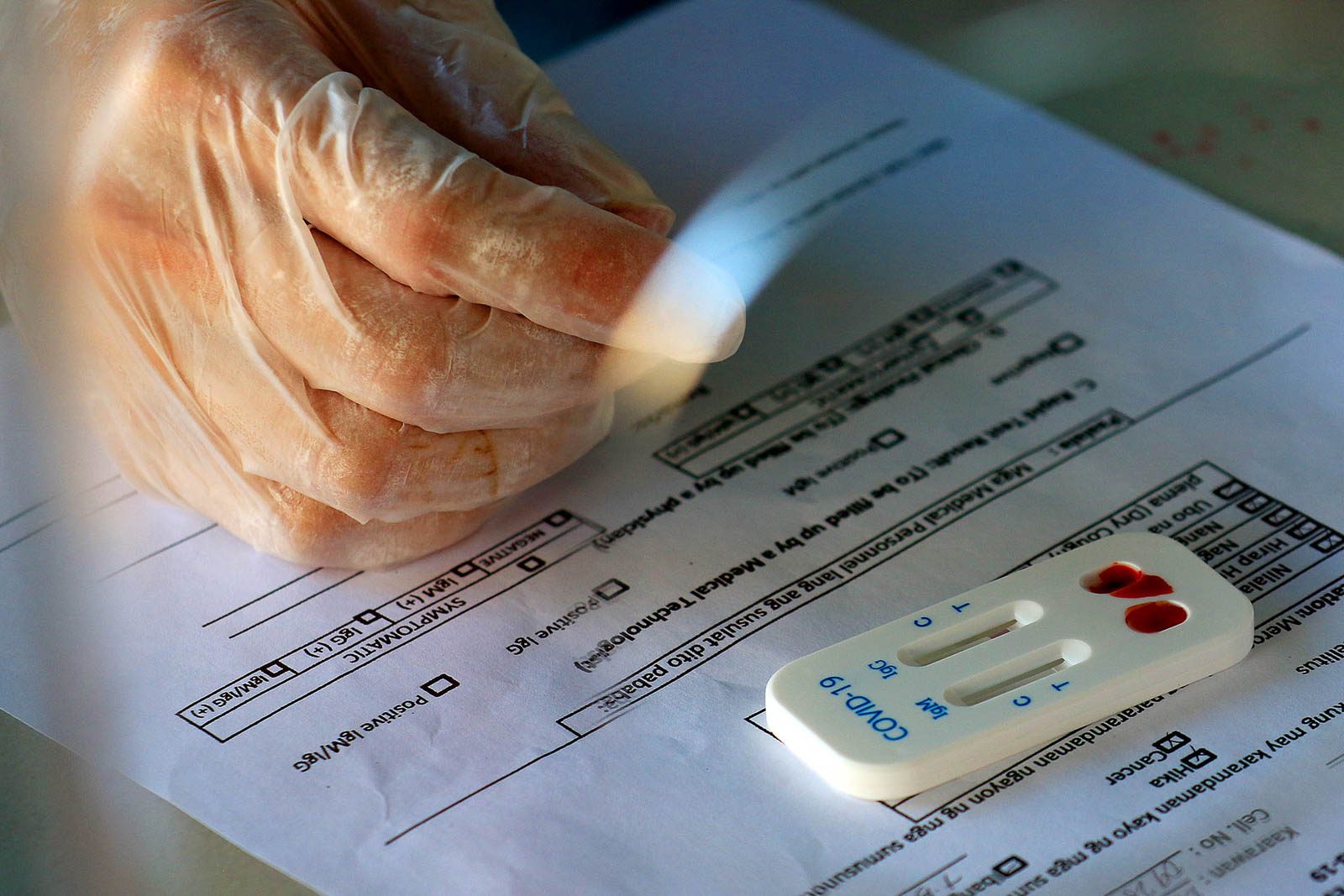
Rapid antibody test
At the end of your 14th day of mandatory quarantine, a rapid antibody test will be conducted and depending on the results, the following will happen:
- If IgM-positive but IgG-negative, your quarantine will be extended by 7 days after which you’ll be tested again.
- If results show you’re IgM-positive but IgG-negative for two consecutive re-testings after the first 14 days of quarantine, a potential false positive result will be considered. Your results will be further examined by infectious disease specialists while quarantine personnel with also coordinate with the HEMB for further medical referral.
You’ll be released from quarantine if:
- Both IgM and IgG are negative, and you’re asymptomatic
- Both IgM and IgG are positive, and you’re asymptomatic
- You’re IgG-positive and you’re asymptomatic
When you’re allowed to leave quarantine, quarantine personnel will issue you a quarantine certificate. You’ll then be transferred to the local government unit of your residence or destination point.
At this point, with testing and quarantine completed, you’ll be allowed to go about with your plans but of course, under a whole other set of quarantine protocols implemented in various areas in the country. – Rappler.com
TOP PHOTO: ARRIVALS. Passengers from international flights arrive at the Ninoy Aquino International Airport Terminal 1 in Pasay City. File photo by Inoue Jaena/Rappler
For the latest quarantine protocols, refer to these guides and explainers:
Add a comment
How does this make you feel?
There are no comments yet. Add your comment to start the conversation.